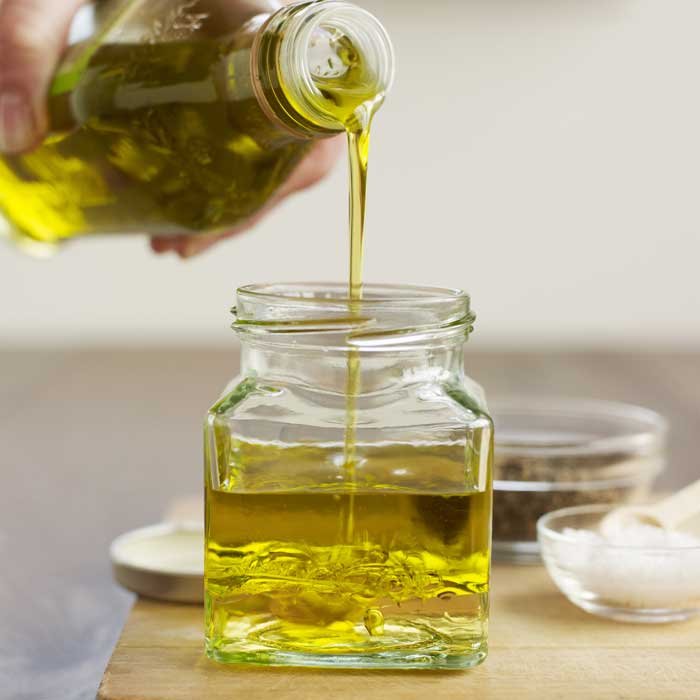Lower-quality oils:
Some olive oil is further refined after the first pressing. These three types of oils can no longer bear the title “virgin.”
When virgin oils are not fit for human consumption (because of poor flavor, an acidity level greater than 3.3 percent, or an unpleasant aroma), they are sent to a processing plant where they become “refined olive oils.” There they undergo processing with agents that might include heat, chemicals, and/or filtration.
These refined olive oils become clear, odorless, and flavorless and have an acidity level of 0.3 percent or less, which gives them a long shelf life (refined olive oils’ only real advantage). They are typically blended with virgin oils, used in cooking, or used for foods that are labeled “packed in olive oil.”
The current “olive oil” category used to be called “pure olive oil.” Today, oils in this classification are a blend of refined olive oil and a virgin olive oil. The virgin oil lends a little aroma and flavor to the final product, which can have an acidity level of no more than 1.5 percent. In most cases, oils in this category contain about 85 percent refined oil and 15 percent virgin or extra-virgin oil. Oils of the “olive oil” grade withstand heat well.
“Olive pomace oil” is made from the olive paste that is left in the centrifuge after the olives are pressed and the oil-water mixture is extracted. Olive pomace oil can be treated with heat and chemicals to extract additional oil (about 10 percent of the original amount of oil in the olives). Its acidity cannot exceed 1.5 percent.
Virgin oil may be added to pomace oil for color and flavor. Olive pomace oil is edible, but it may not carry the name “olive oil.” This oil is most often used commercially and is rarely seen on the grocer’s shelf.






